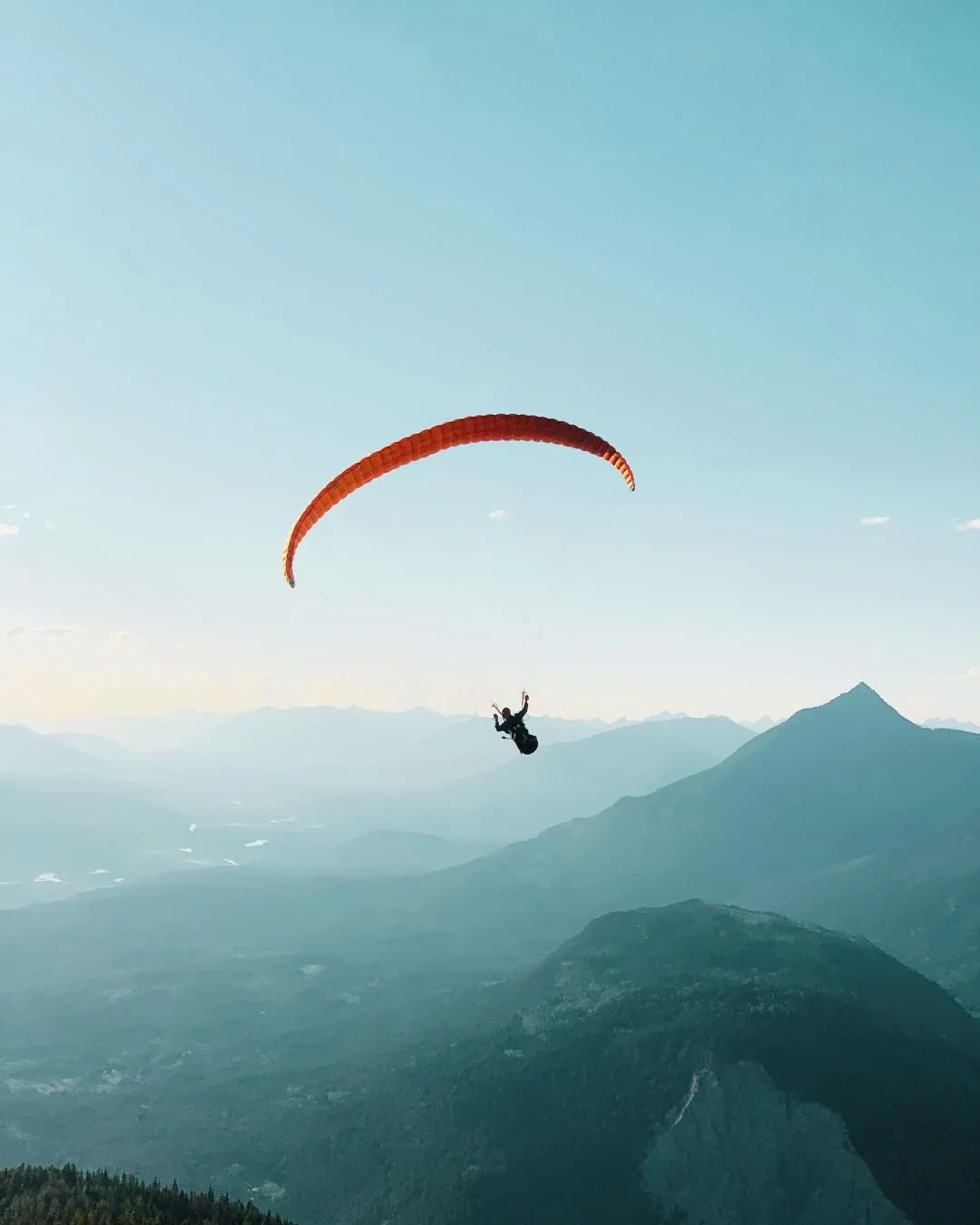Managing Risk in Adventure Sports
In my 4 years of paragliding, I’ve met people who have
1 Landed in trees
2 Broken both legs
3 Had their foot amputated
4 Broken their back
5 And passed away paragliding
I have only sprained an ankle so far. Despite all the evidence, I still don’t see paragliding as a high-risk sport. Let me explain.
In all adventure sports, there is risk involved but actions must be made to mitigate those risks. Risk, although it can be somewhat measured, will always have the factor of surprise, particularly paragliding. Who can harness the wind?
Some of those accidents listed above happened to pilots with decades of experience, or a credible amount of airtime and practice flying in an assortment of conditions. Which leaves you leaning towards the fact that paragliding is dangerous, especially for the inexperienced. If the pros are struggling then what luck do the rest of us have? I don’t think that’s necessarily true.
When I first started paragliding for myself, the stigmas around risk and adrenaline were blown out of the water for me. I experienced first-hand how slow, meticulously thought-through and peaceful flying was. People I met who had never flown would say, “That’s crazy, I couldn’t imagine jumping off the cliff like that!”. Unbeknownst to them, the experience is more of a gradual ascension into the air, like Mary Poppins slowly lifting off the ground with her umbrella. What they don’t see is that before “jumping off the cliff”, there are rigorous checks to tick off. Helmet, harness, reserve, carabiners locked, speed bar lines attached, lines clear and orderly, risers connected correctly. You familiarise yourself with the airspace before and after your checks. What is the wind speed up high and down low? Are there other gliders or aircraft in the sky? How are the clouds developing? Is the contrast of wind gusts greater than what is manageable? What direction is the air flowing up the slope? Then when the time comes to enter the other worldly, you tease the fabric of your wing, asking it to stretch out and lift, and devour the wind until it is fully inflated. Then you run at one with your wing down the slope as the distance from the ground increases and begins to feel immeasurable. You are flying.
Accidents can happen for several reasons, but most of the time it is widely understood as pilot error. We ask questions to try and reconcile accidents in our minds. Were they familiar with the site? Did they set up correctly? Were they under the influence of drugs or alcohol? Did another pilot make an unpredictable movement? Were they rushing to launch? Did they underestimate the wing speed or direction? Was their wing damaged or rated above their skill level? Did they have the skills to correct their wing during a collapse? There are so many layers to managing the risk that can occur. I don’t pin paragliding or other adventure sports as high risk because I believe our relationships with them can help mitigate the risk. Here are some examples.
Be slow
Take your time, refuse to be rushed by others around you. If someone is lined up waiting to climb after you, politely own the space, check your knots, check your buddy and communicate. Similarly, if there are pilots dotted over the launch area ready to go, take your paraglider and set up away from them, move slowly through your checks, clip in your risers, speed bar and mushroom your wing, fully safe and ready, giving you more time to focus on take off when your turn arises.
Block out
I once had a stranger pretend to cut my lines as I was ready for takeoff. Very unhelpful and unnerving. It’s a given that as you pursue adventure sports you’ll accumulate spectators. Do your best to block out the voices and faces of onlookers. Questions or comments from the crowd or individual are lowest priority, your focus, safety and setup are number one. There is no obligation to respond or entertain and it’s ok to communicate what you need with others. That can look like asking someone, “Please don’t take my photo”, “Could you stand over there”, “Can you put your dog on a leash,” or “It’s important to me to focus and I’m sorry I can’t have a conversation right now, would you mind giving me some space.”
Be curious
Ask yourself, is there anything about the conditions, location, or the plan that may be obvious or not so obvious? Ask questions to others around you with more experience, “What are you thinking?”, “What are you planning to do?”, “I noticed this, what does that mean?” “What are you expecting may happen?” Even professionals can make mistakes, underestimate adventure elements or be faced with the unpredictable, but being curious can help us see more of a bigger picture. Some other ways you can be curious are by reading guidebooks, online blogs of those who have gone before and discovered obstacles, reading reviews, studying maps, and upskilling in a course related to your adventure.
Be realistic
I’m a huge fan of slow progression. I know others can jump in and practice and move quickly to using more advanced gear or techniques but I think there can be a real strength to slow learning. Practice becoming great at a beginner level, then great at intermediate, then embody the pro and buy cool sunglasses. I don’t believe there’s ever a ceiling that will stop us progressing in our adventure sports, so there’s no rush to reach a destination, focus on making the journey safely.
Lastly, I do think there is space for unfortunate accidents that are out of our hands, where nothing could have been humanly possible to improve the result. For some, that risk is enough to walk away and never return to the activity. I get it. There aren’t a whole lot of things worth dying for, but in the small life that we're given, there are beautiful things worth enjoying while we’re living. What’s life without a little risk?




